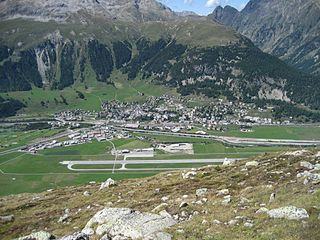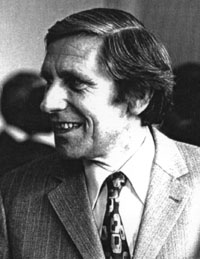LSZ may refer to:
- Lysergic acid 2,4-dimethylazetidide, an analogue of LSD
- LSZ reduction formula, a method to calculate the scattering amplitudes from the time-ordered correlation functions of a quantum field theory
- Lošinj Airport, Croatia
LSZ may refer to:

In quantum field theory, correlation functions, often referred to as correlators or Green's functions, are vacuum expectation values of time-ordered products of field operators. They are a key object of study in quantum field theory where they can be used to calculate various observables such as S-matrix elements.

LiteStep is a Windows Shell replacement for Windows 9x and up, licensed under the terms of the GNU General Public License (GPL).

AL-LAD, also known as 6-allyl-6-nor-LSD, is a psychedelic drug and an analog of lysergic acid diethylamide (LSD). It is described by Alexander Shulgin in the book TiHKAL. It is synthesized starting from nor-LSD as a precursor, using allyl bromide as a reactant.

ETH-LAD, 6-ethyl-6-nor-lysergic acid diethylamide is an analogue of LSD. Its human psychopharmacology was first described by Alexander Shulgin in the book TiHKAL. ETH-LAD is a psychedelic drug similar to LSD, and is slightly more potent than LSD itself, with an active dose reported at between 20 and 150 micrograms. ETH-LAD has subtly different effects to LSD, described as less demanding.

N-Morpholinyllysergamide (LSM-775) is a derivative of ergine. It is less potent than LSD but is reported to have some LSD-like effects at doses ranging from 75 to 700 micrograms and a shorter duration. There are fewer signs of cardiovascular stimulation and peripheral toxicity with LSM-775 compared to LSD.
Arnold Tsunga was the Director of the Africa Regional Programme of the International Commission of Jurists (ICJ) until 2020.
Kurt Symanzik was a German physicist working in quantum field theory.

Samedan Airport, also known as Engadin Airport, is a regional airport in Samedan in the Engadin valley of Switzerland, 5 km from St. Moritz.

Harry Lehmann was a German physicist.

The San Francisco Estuary together with the Sacramento–San Joaquin River Delta represents a highly altered ecosystem. The region has been heavily re-engineered to accommodate the needs of water delivery, shipping, agriculture, and most recently, suburban development. These needs have wrought direct changes in the movement of water and the nature of the landscape, and indirect changes from the introduction of non-native species. New species have altered the architecture of the food web as surely as levees have altered the landscape of islands and channels that form the complex system known as the Delta.

Lysergic acid 2,4-dimethylazetidide is an analog of LSD developed by the team led by David E. Nichols at Purdue University. It was developed as a rigid analog of LSD with the diethylamide group constrained into an azetidine ring in order to map the binding site at the 5-HT2A receptor. There are three possible stereoisomers around the azetidine ring, with the (S,S)-(+) isomer being the most active, slightly more potent than LSD itself in drug discrimination tests using trained rats.

Lysergic acid 2-butyl amide (2-Butyllysergamide, LSB) is an analogue of LSD originally developed by Richard Pioch at Eli Lilly in the 1950s, but mostly publicised through research conducted by the team led by David E. Nichols at Purdue University. It is a structural isomer of LSD, with the two ethyl groups on the amide nitrogen having been replaced by a single sec-butyl group, joined at the 2-position. It is one of the few lysergamide derivatives to exceed the potency of LSD in animal drug discrimination assays, with the (R) isomer having an ED50 of 33nmol/kg for producing drug-appropriate responding, vs 48nmol/kg for LSD itself. The corresponding (R)-2-pentyl analogue has higher binding affinity for the 5-HT1A and 5-HT2A receptors, but is less potent in producing drug-appropriate responding, suggesting that the butyl compound has a higher efficacy at the receptor target. The drug discrimination assay for LSD in rats involves both 5-HT1A and 5-HT2A mediated components, and while lysergic acid 2-butyl amide is more potent than LSD as a 5-HT1A agonist, it is slightly less potent as a 5-HT2A agonist, and so would probably be slightly less potent than LSD as a hallucinogen in humans. The main use for this drug has been in studies of the binding site at the 5-HT2A receptor through which LSD exerts most of its pharmacological effects, with the stereoselective activity of these unsymmetric monoalkyl lysergamides foreshadowing the subsequent development of compounds such as lysergic acid 2,4-dimethylazetidide (LSZ).
A reduction formula is used to represent some expression in a simpler form.
Wolfhart Zimmermann was a German theoretical physicist. Zimmermann attained a doctorate in 1950 at Freiburg im Breisgau in topology.
Klaus Hepp is a German-born Swiss theoretical physicist working mainly in quantum field theory. Hepp studied mathematics and physics at Westfälischen Wilhelms-Universität in Münster and at the Eidgenössischen Technischen Hochschule (ETH) in Zurich, where, in 1962, with Res Jost as thesis first advisor and Markus Fierz as thesis second advisor, he received a doctorate for the thesis and at ETH in 1963 attained the rank of Privatdozent. From 1966 until his retirement in 2002 he was professor of theoretical physics there. From 1964 to 1966 he was at the Institute for Advanced Study in Princeton. Hepp was also Loeb Lecturer at Harvard and was at the IHÉS near Paris.
A Heavy Freezing Spray Warning is issued by the National Weather Service of the United States to warn vessels that rapid accumulation and icing of freezing water droplets due to a combination of cold water, wind, cold air, and vessel or vehicle movement is likely. Accumulation rates of 2 cm per hour or greater must be possible for a warning to be issued, or else a freezing spray advisory would be issued.
A selective estrogen receptor degrader or downregulator (SERD) is a type of drug which binds to the estrogen receptor (ER) and, in the process of doing so, causes the ER to be degraded and thus downregulated. They are used to treat estrogen receptor-sensitive or progesterone receptor-sensitive breast cancer, along with older classes of drugs like selective estrogen receptor modulators (SERMs) and aromatase inhibitors.

1cP-LSD is an acylated derivative of lysergic acid diethylamide (LSD), which has been sold as a designer drug. In tests on mice it was found to be an active psychedelic with similar potency to 1P-LSD.

1B-LSD is an acylated derivative of lysergic acid diethylamide (LSD), which has been sold as a designer drug. In tests on mice it was found to be an active psychedelic, though with only around 1/7 the potency of LSD itself.
The Law Society of Zimbabwe (LSZ) is the law society responsible for representing and regulating how lawyers and law firms operate in Zimbabwe. It is mandated to observe of the rule of law in the justice system.